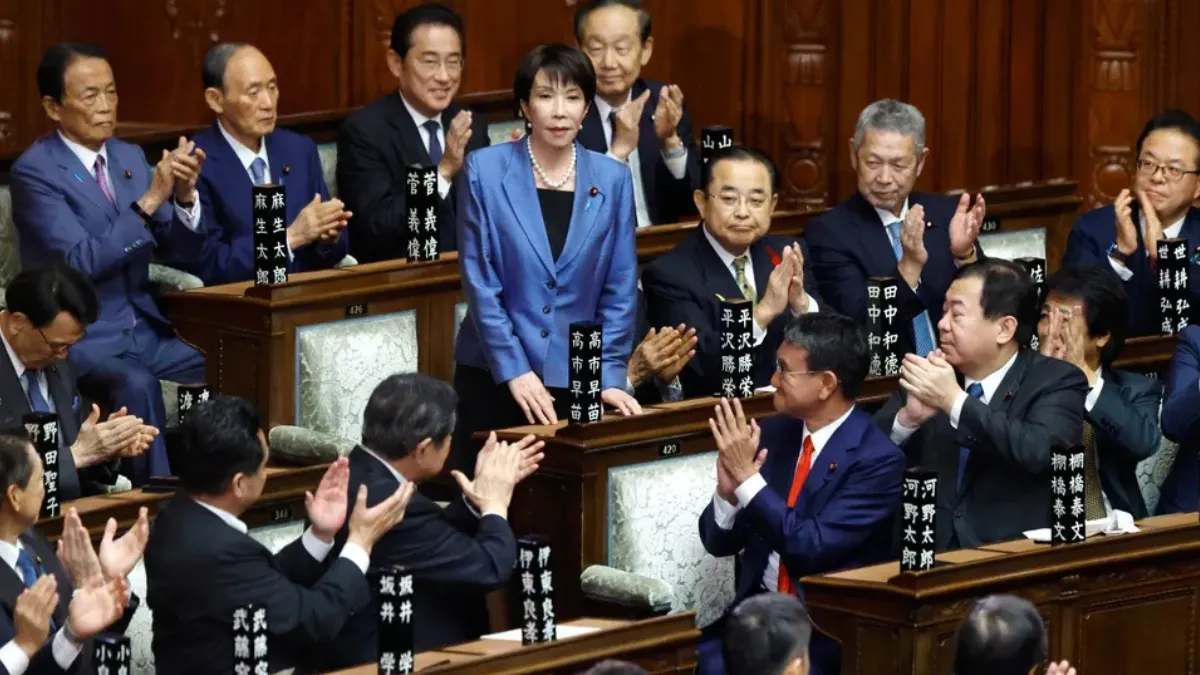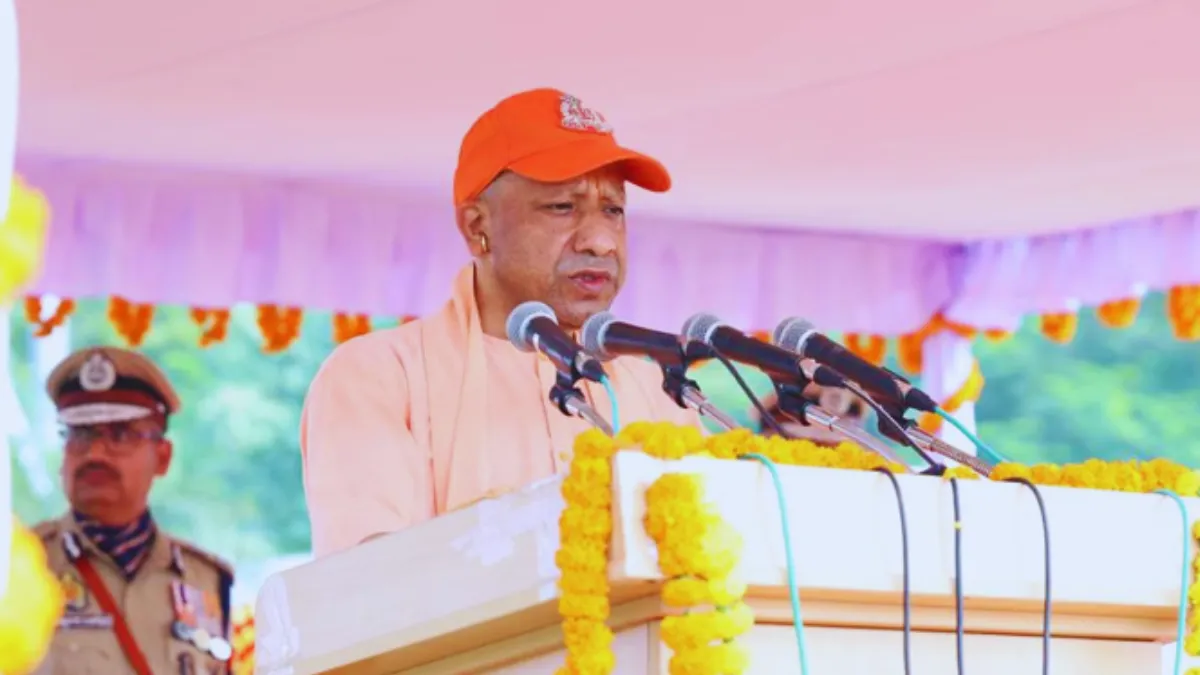Tokyo, Japan —Sanae Takaichi Japan: In a historic yet politically charged moment, Sanae Takaichi has become Japan’s first-ever female prime minister, marking a new chapter in the nation’s political history. Her election comes at a time of deep political instability, following the Liberal Democratic Party’s (LDP) major defeat in July’s national elections and the resignation of former Prime Minister Shigeru Ishiba.
Takaichi, known for her ultraconservative ideology and admiration of former British leader Margaret Thatcher, steps into power promising strong leadership but faces skepticism over her stance on gender equality and social reform.
Historic Victory in the Parliament
Japan’s parliament officially elected Sanae Takaichi as the new prime minister on Tuesday after a tense vote in the lower house, the more powerful chamber that determines the nation’s leader.
She secured 237 votes, four more than the majority required, defeating Yoshikiko Noda, head of the opposition Constitutional Democratic Party of Japan, who received 149 votes. As the results were read out, Takaichi stood and bowed deeply — a symbolic gesture of respect marking her entry into history.
Her election ends months of political uncertainty and power struggle following the LDP’s internal chaos and coalition collapse.
A Milestone for Japan, but Not a Feminist Shift
Although Sanae Takaichi’s appointment has been hailed as a milestone for Japanese women, her rise does not necessarily symbolize a progressive shift toward gender equality.
Despite leading a country where women continue to face limited representation in politics and corporate leadership, Takaichi has not championed feminist causes. She openly supports the male-only succession system in Japan’s imperial family, opposes same-sex marriage, and rejects proposals allowing married couples to use separate surnames.
Her admiration for Thatcher reflects her belief in conservative family values, self-reliance, and national pride rather than feminist advocacy.
Cabinet Choices Reflect Conservative Priorities
Before her election, Takaichi had pledged to create a “diverse and inclusive” cabinet. However, the final announcement disappointed many observers. Out of 19 cabinet members, only two women were appointed:
- Satsuki Katayama as Finance Minister
- Kimi Onoda as Minister of Economic Security
Critics argue that this undermines her earlier commitment to promoting women in politics.
Soshi Matsuoka, a well-known LGBTQ+ rights activist, described her victory as “epoch-making but troubling,” adding,
“Prime Minister Takaichi’s conservative stance on gender and sexuality could become a major setback for the rights of women and sexual minorities in Japan.”
Public Reactions: Hope and Hesitation
Public sentiment across Japan remains mixed. Many citizens celebrated the fact that the country finally broke its long-standing gender barrier in leadership.
Takayuki Eguchi, a 62-year-old Tokyo resident, said he initially doubted whether a woman could gain enough political backing in Japan’s male-dominated system. He described Takaichi’s election as a “moment of hope.”
“I really hope she serves for a long time and brings Japan out of this stagnation,” Eguchi said. “It’s time for change, both in Japan and in how the world sees us.”
Others, however, remain skeptical about whether Takaichi’s government will truly represent progress or merely preserve the old political order under a new face.
A Fragile Coalition Government
Takaichi’s rise was made possible by a new coalition between the LDP and the Japan Innovation Party (Ishin no Kai), a right-wing Osaka-based group. This alliance gave her the votes needed to win, but it also pulled her administration further toward nationalist and conservative policies.
The coalition is, however, fragile and untested. Even with Ishin’s support, Takaichi’s bloc still lacks a stable majority in both houses of parliament. To pass any major bills, she will need to negotiate with smaller opposition parties — a situation that could make her leadership vulnerable and short-lived.
The coalition’s policy agreement emphasizes national defense, constitutional revision, and economic self-reliance — aligning closely with Takaichi’s hawkish views.
Challenges Awaiting Takaichi Japan
As the new prime minister, Sanae Takaichi Japan faces an uphill battle to stabilize the economy and restore voter trust.
Her immediate challenges include:
- Tackling rising inflation and consumer prices
- Designing economic stimulus packages by December
- Strengthening diplomatic ties with major allies like the United States
- Balancing Japan’s relationships with China and South Korea
Takaichi’s first international test will come soon, with scheduled talks with U.S. President Donald Trump and upcoming Asia-Pacific summits where she will meet regional leaders.
Although she has extensive domestic political experience since first being elected to parliament in 1993, her foreign policy background is limited. Many analysts believe she will rely heavily on Japan’s bureaucratic establishment and diplomatic advisors in her initial months.
Following Shinzo Abe’s Legacy
Takaichi is widely seen as a protégé of the late former Prime Minister Shinzo Abe, who was assassinated in 2022. Like Abe, she advocates for a stronger Japanese military, a revised pacifist constitution, and an assertive foreign policy toward China and North Korea.
However, unlike Abe, her base of support within the LDP is narrower, which may limit her ability to push through major reforms.
Political experts note that while Takaichi will likely attempt to continue Abe’s legacy of “proactive nationalism,” she must also rebuild public confidence after a series of corruption and slush fund scandals that have weakened the LDP’s reputation.
Nationalism and Historical Controversies
Takaichi’s political career has long been marked by controversy over her revisionist views of Japan’s wartime history.
Her visits to the Yasukuni Shrine, where convicted war criminals are honored, have drawn criticism from China and South Korea, who view such actions as evidence of Japan’s lack of remorse for its wartime aggression.
Recently, to soften her image, Takaichi avoided visiting the shrine personally and instead sent a religious offering. Analysts believe this was a strategic move to avoid escalating diplomatic tensions in her early days as prime minister.
Still, concerns persist. The centrist Komeito Party, which left the coalition earlier this year, cited her nationalist leanings and the LDP’s poor handling of corruption scandals as reasons for their split.
International Reactions to Sanae Takaichi Japan
South Korea’s Optimistic Response
South Korean President Lee Jae Myung congratulated Takaichi and expressed hope for stronger bilateral relations.
“South Korea-Japan relations are more important than ever in today’s uncertain global climate,” he said. “I look forward to building forward-looking cooperation and coexistence with Prime Minister Takaichi.”
Observers say that Takaichi’s willingness to meet with South Korea’s leader at the upcoming APEC Summit could signal a pragmatic approach despite her conservative background.
China’s Cautious Welcome
China’s Foreign Ministry offered a measured response. Spokesperson Guo Jiakun said Beijing hopes Japan will honor its historical and political commitments, especially regarding Taiwan.
“We expect Japan to maintain the political foundation of our bilateral relations and promote mutual benefit,” Guo said.
Takaichi’s known pro-Taiwan stance remains a sensitive issue for Beijing, which views Taiwan as a breakaway province. Her government’s future approach to this delicate matter will be closely watched across Asia.
Also read:Japan 1st Woman PM Sanae Takaichi Names Only Two Women in Her Cabinet Despite “Nordic” Promise
European Union’s Praise
Ursula von der Leyen, President of the European Commission, congratulated Takaichi via social media, writing:
“As Japan’s first female Prime Minister, you’re making history. I look forward to working closely to take the EU–Japan partnership to the next level.”
The European Union has expressed optimism that Japan under Takaichi will continue to uphold democratic values and collaborate on trade, technology, and climate initiatives.
Also read: Japan 1st Woman PM Sanae Takaichi Names Only Two Women in Her Cabinet Despite “Nordic” Promise
Outlook: A Symbolic Step with Real Challenges
The rise of Sanae Takaichi Japan is undeniably historic — breaking a centuries-old glass ceiling in one of the world’s most male-dominated political systems. Yet, questions remain about whether her leadership will advance women’s empowerment or reinforce conservative norms.
Her government faces daunting economic, political, and diplomatic challenges. Success will depend on her ability to balance nationalist ideology with pragmatic governance, strengthen alliances, and restore public trust in a weary electorate.
As Japan and the world watch her next moves, Sanae Takaichi’s premiership stands as both a symbol of change and a test of how far Japan is truly ready to go in embracing it.
















